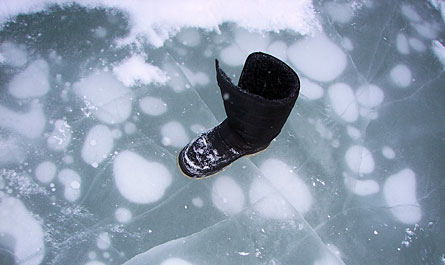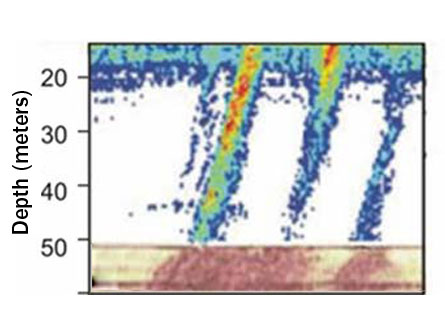Prodigious plumes of planet-warming methane are bubbling from sediments across a broad region of Arctic seafloor previously thought to be sealed by permafrost, new analyses indicate. The resulting increase of methane gas in the atmosphere may accelerate climate warming, scientists say.


Though immense amounts of carbon are known to be trapped in the peatlands of Siberia, a larger, often unrecognized carbon reservoir lies hidden just north of that frigid region, says Natalia Shakhova, a biogeochemist at the University of Alaska in Fairbanks. The East Siberian Arctic Shelf — a 2.1-million-square-kilometer patch of Arctic seafloor that was exposed during the most recent ice age, when sea levels were lower — is three times larger than all of today’s land-based Siberian wetlands. When the region was above sea level, tundra vegetation pulled carbon dioxide from the air as plants grew. That organic material, much of which didn’t decompose in the frigid Arctic, accumulated in the soil and is the source of modern methane.
Now, field studies by Shakhova and her colleagues, reported in the March 4 Science, suggest that the submarine reservoir of carbon has begun to leak.
During six cruises in the region from 2003 to 2008, the researchers gathered data at more than 1,000 spots in the Greenland-sized stretch of shallow ocean. The team also took atmospheric readings of methane concentration during one helicopter survey and a wintertime excursion from shore onto the ice-covered sea, says Shakhova.
The researchers found unexpectedly high amounts of methane dissolved in seafloor waters across 80 percent of the area they studied. In some spots, methane concentrations during those six years averaged more than 80 times normal. Because the water over the shelf is relatively shallow — average depth in the region is about 45 meters, Shakhova notes — much of the methane reaches the ocean surface and then wafts into the atmosphere.
Previously, scientists presumed that the carbon trapped in sediments on the East Siberian Arctic Shelf was sealed by permafrost, as nearby deposits on land are. But there’s a big difference between the two, Shakhova says: Much of the permafrost on land remains intact because it’s exposed to bitter winter cold, whereas the seafloor permafrost is bathed in cold, yet definitely not freezing, salt water. The annual average temperature of seafloor permafrost is between 12 and 17 degrees warmer than that of nearby land-based permafrost, she notes.
The warmth of the seawater, as well as heat flowing up from within the Earth, has thawed the seafloor permafrost, releasing the methane, the researchers speculate. “We don’t know how long it’s been bubbling like this,” Shakhova adds.
Sonar images show plumes of methane bubbling from the seafloor, indicating that the gas originates in sediments there. Other measurements show that the methane isn’t generated in the water by microbes or brought to the seas by rivers, Shakhova says.
Each year, the researchers estimate, nearly 8 million metric tons of methane make their way to the atmosphere over the East Siberian Arctic Shelf. That’s more than previous estimates for all of the world’s oceans, Shakhova notes.
Siberian seafloor sediments are spewing much more methane than previously thought, but they’re providing only a small fraction of the estimated 440 million tons of that planet-warming gas emitted to the atmosphere each year, Martin Heimann, a biogeochemist at the Max Planck Institute for Biogeochemistry in Jena, Germany, comments in Science. Nevertheless, he notes, release of a sizeable fraction of the carbon trapped in these sediments would lead to warmer atmospheric temperatures, which would in turn cause more methane to be released.






